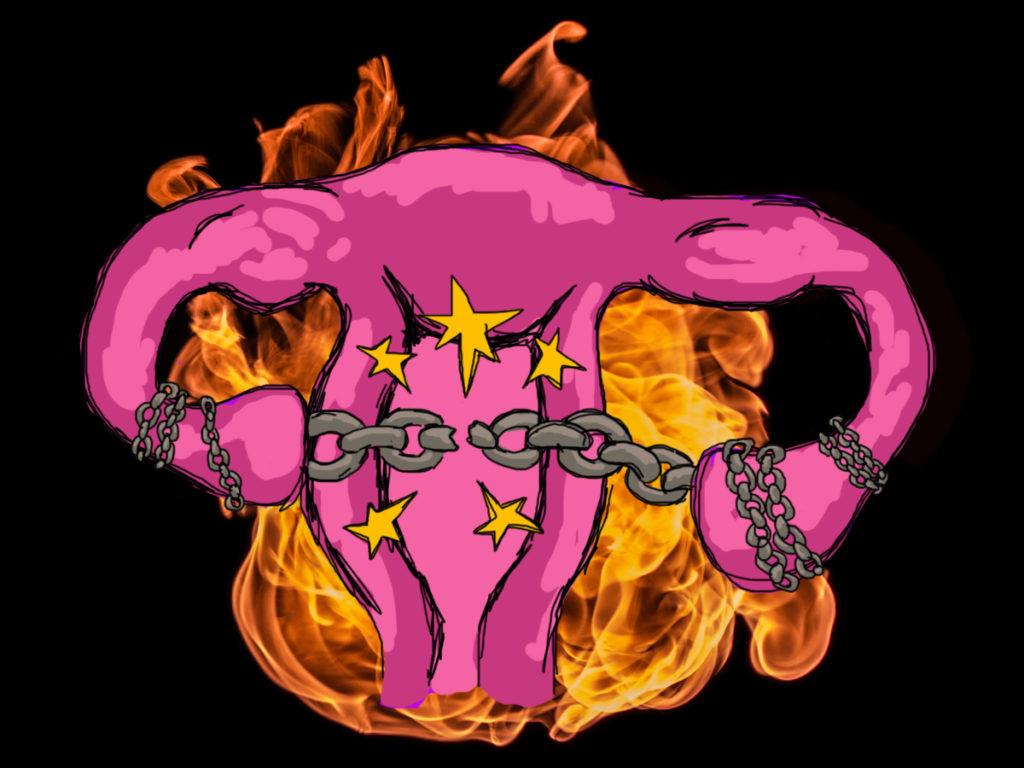
Even after months of painstaking examination of the series for a research project, I am still bewildered by E.L. James’ Fifty Shades of Grey trilogy. For those of you unfamiliar with the series, the story (originally a fanfiction inspired by the Twilight Saga) follows Ana Steele. Ana is a college student who is a virgin, does not masturbate, and who has never thought about engaging in any kind of erotic play until she meets Christian Grey, a rich, handsome, mysterious CEO and—vitally—a long-practicing Dominant (or Dom). From there the two have sex and perform BDSM scenes, and eventually they fall in love.
People talk a lot about Fifty Shades, and with the slow release of updates for the film adaptation, the discussion won’t stop any time soon. Critics either praise it as sex positive (which I will say right now it’s not) or demonize it as inherently evil because all BDSM is a form of abuse.
I fall somewhere away from both these extremes, where I want to acknowledge the possibilities of a consenting BDSM relationship in the structure E.L. James gives us while complicating the way the story fails to actually present a healthy partnership. I describe this back and forth through using tourism as a metaphor. A tourist enters into a space, enjoys it, benefits from being there, and contributes to it (usually monetarily), but there is no true permanent affiliation between the individual tourist and the space they are visiting. So in Fifty Shades, both BDSM and consent are toured, invoked and played within, but the narrative never commits to presenting a fully formed, sex positive, healthy representation of Dominance and submission.
What makes this tourism so hard to see is that Fifty Shades presents the sexuality of an extreme form of BDSM (which, by the way, stands for B&D for bondage and discipline; D/s for Dominance and submission; S/M for sadism and masochism). This form is a Total Power Exchange (TPE, or 24/7), in which the lines between the BDSM play and life outside this particular relationship style are blurred. Rules can be placed outside of the bedroom, and the Dom may have a say in most (if not all) parts of the sub’s life. As such, it’s important to understand how consent might appear—at first—to be different in BDSM than in “vanilla” sexual and/or romantic relationships. Ana is struck by Christian, Christian ignores her wants, and Christian wants control over most of what Ana can and cannot do—all of which would be immediately tied to abuse if these were not part of the parameters of BDSM. But, just because consent within BDSM looks different does not mean Christian’s actions are not problematic. The inequality constructed through the (mis)education Ana receives moves the power dynamics from appropriate to at least manipulative, at most abusive.
For example: The plot in the first book centers on a BDSM contract that Christian wants Ana to sign. This contract establishes strict ground rules, expectations and punishments over most aspects of Ana’s daily life. But while they engage in sex that involves BDSM play, the contract is never signed. I cannot immediately read the contract never being signed as a sign of abuse or Christian being a bad Dom, even if that admittedly was my initial response. As I have established, Christian and Ana’s relationship is based on a TPE model. Never signing the contract may still be operating as a perfectly consenting relationship if, by presenting the exhaustive document, the contract was used as a prop to heighten the mood without ever committing. Pleasure, eroticism and connection could be derived from this use of the contract. If it was used as a symbol of power rather than a formal reality, the contract could make sense. Christian asserts his Dominance through his contract’s professionalism, and its expansiveness—covering everything from eating habits to hard limits to eye contact to clothing—is purposefully overwhelming.
One section even reads like a legal document and uses of words like “proviso” and “clause.” The contract could have been a gorgeous portrait of meta-power play, where the presence of the contract was enough to invoke TPE without ever agreeing to it. Unfortunately, this is not the case. The contract is used as a representation of the end-of-the-line for Ana: signing the contract equates to giving up her decision-making control. While that may be so, there is no consideration that Ana and Christian currently engage in a BDSM relationship—which they are. Christian actively exerts his Dominance over Ana, and Ana receives many strikes, reprimands and adjustments to her temperament.
The divorce from what is said and what is performed is startling. There is a profound misunderstanding about what constitutes a BDSM relationship. For Ana and Christian, it only starts after a contract is signed. In reality, a BDSM relationship does not only refer to agreeing to BDSM expressions of sexuality; a monogamous, long-term BDSM relationship also inhabits spheres of emotional, sensual and mental BDSM practices and in many cases, vanilla practices as well. Whatever negotiations happening for the contract—however positive and well-meaning they are—do not seem to extend to the current situation between Ana and Christian.
With no negotiations, the actions performed during Fifty Shades puts Ana in danger of physical harm and of manipulation. Thus, this divorce is a prime example as to how the relationship is based on an unequal power dynamic, privileging the Dom, Christian. You can see this dynamic and others like it play out across the entire three books, and what ties them all together is the idea of tourism and never fully committing to safer, happier options for either Ana or Christian.
Having said all this, Fifty Shades does not exist in a vacuum of eroticized literary history. Romance and erotic novels have been around for a while, and Fifty Shades is just one of them. There is problematic stuff in any bit of media we ingest from any medium and genre.
But what is unique about Fifty Shades is just how popular it is. Millions of books have been sold worldwide, and there has been an extremely noticeable affect on the sales of sex toys and BDSM paraphernalia. People are getting inspired by this text, moving it out of simply a romanticization into the realm of a how-to guide for beginners. Because of this real world transference, I feel it is important to look back at the text and take it as seriously as many people already do. Because even though I do not think Fifty Shades should be a classic, the trilogy means a lot to a lot of people, and those readers’ experience makes this trilogy something that—if not appreciated—is at least acknowledged and understood as valuable.









Michelle Thomson • Sep 11, 2019 at 10:40 pm
Great web site you have got here.. It’s difficult to find good quality writing like yours nowadays. I really appreciate individuals like you! Take care!!
Robert Allan • Sep 5, 2019 at 10:03 pm
Thanks for the strategies you have provided here. On top of that, I believe there are some factors which keep your car insurance premium all the way down. One is, to contemplate buying automobiles that are from the good report on car insurance companies. Cars which can be expensive tend to be more at risk of being stolen. Aside from that insurance policies are also in accordance with the value of your truck, so the more expensive it is, then higher a premium you pay.